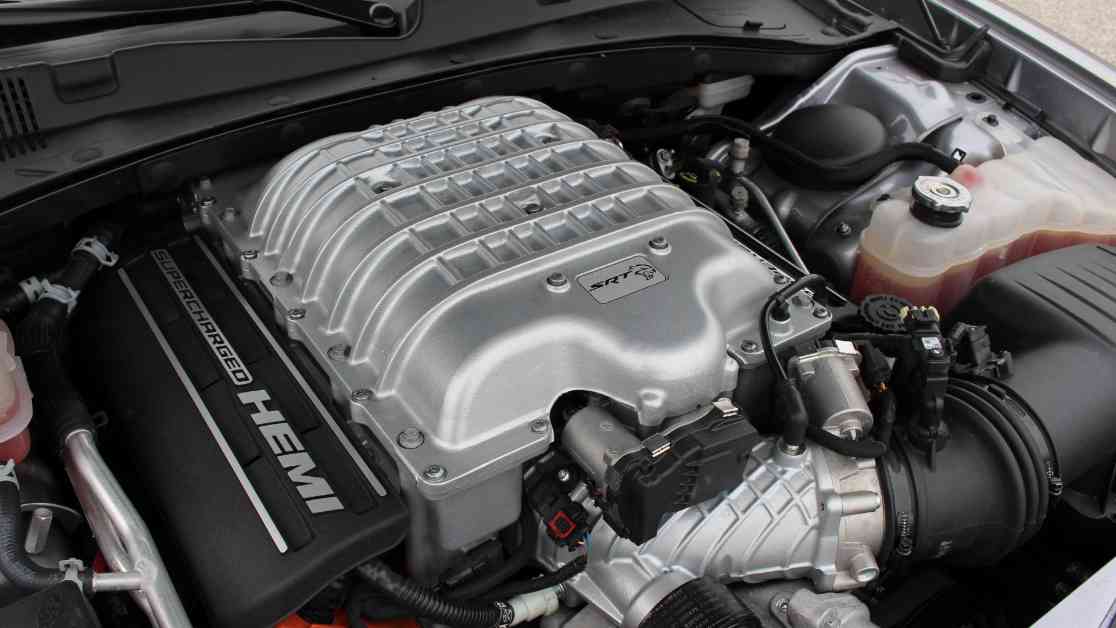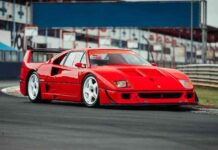In a world where trucks reign supreme and sports cars are becoming a rarity, the Dodge V8 engine faces an uncertain future. Once the hallmark of performance and power for the brand, the iconic V8 is now at a crossroads as Dodge navigates a new era of electrification and evolving market demands.
More than three decades ago, Dodge shook up the automotive world with the introduction of the Viper, a two-seat sports car unlike any other. Sporting a ten-cylinder engine and a body inspired by the Corvette, the Viper quickly became synonymous with raw power and speed. While many speculated that the Viper’s engine was borrowed from a pickup, the truth was far more intriguing. Lamborghini engineers played a significant role in the development of the Viper’s engine, showcasing a collaborative effort that transcended traditional boundaries.
Fast forward to the present day, and Dodge finds itself at a critical juncture. Under the umbrella of Stellantis, the company is grappling with an identity crisis as it shifts from a V8 performance brand to a more truck-centric focus. The iconic Hemi engine, a marketing marvel designed to sell pickups, has long been the centerpiece of Dodge’s lineup. However, with the changing landscape of the automotive industry, the future of the V8 engine hangs in the balance.
As Dodge CEO Matt McAlear candidly acknowledges, there remains a loyal fan base dedicated to the V8 engine. However, the shifting tides of electrification and evolving consumer preferences pose significant challenges for the brand. While the allure of large-displacement power has long been associated with Dodge, the market dynamics have evolved, necessitating a reevaluation of the V8’s role in the company’s future.
Shifting Priorities: The Rise of Trucks and SUVs
Over the past few decades, the automotive landscape has undergone a seismic shift. Once the domain of low-slung sedans and high-performance coupes, the market is now dominated by trucks and SUVs. Regulatory pressures, consumer preferences, and technological advancements have all contributed to this transformation, leaving traditional sports cars in the shadows.
Dodge’s strategic focus on trucks and SUVs reflects the broader industry trend towards larger, more versatile vehicles. With consumers demanding comfort, space, and efficiency in equal measure, automakers are faced with the challenge of balancing competing priorities. In this landscape, the V8 engine, once a symbol of power and performance, must find its place in a world that values practicality and sustainability.
The Future of the V8: Navigating Uncertainty
As Dodge contemplates the future of the V8 engine, questions abound regarding its relevance in a rapidly changing world. While die-hard enthusiasts continue to champion the V8’s legacy, market realities and shifting consumer preferences cast a shadow of uncertainty over its future. The emergence of electric vehicles, stringent emissions regulations, and evolving technology present formidable challenges for the traditional V8 engine.
In the midst of this uncertainty, Dodge remains committed to innovation and adaptation. As Matt McAlear aptly notes, the V8 engine is not a relic of the past but a symbol of enduring passion and performance. While the market dynamics may shift, the spirit of the V8 lives on in the hearts of enthusiasts and engineers alike. Only time will tell how Dodge navigates this new chapter in its storied history.
In a world where change is the only constant, the fate of the V8 engine hangs in the balance. As Dodge charts a course towards an electrified future, the enduring legacy of the V8 engine serves as a testament to the brand’s commitment to power, performance, and innovation. Whether the V8 engine will stand the test of time or yield to the forces of progress remains to be seen. One thing is certain: the spirit of the V8 will endure, a symbol of the passion and ingenuity that drive the automotive industry forward.










